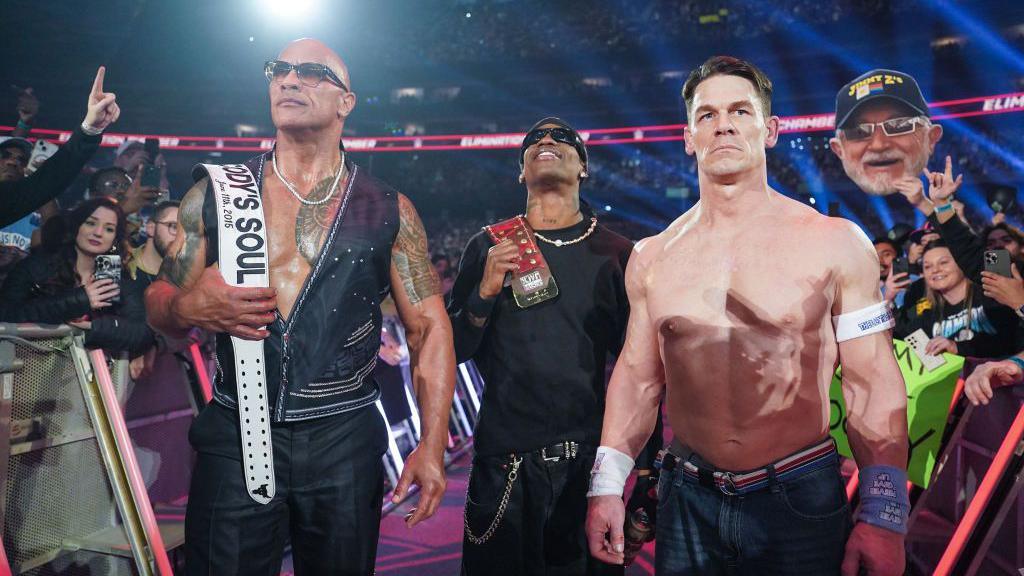Photography was ubiquitous in Louisiana-born photographer Lucius A. Fontenot‘s house growing up. His dad turned their bathroom into a darkroom, and he’s been fascinated by film for as long as he can remember. As a teen in the 90s, he got his own camera and began shooting concerts all around the state. Eventually he became enthralled by local traditions like Courir de Mardi Gras and communal hog slaughters known as boucheries.
“Having grown up with these activities, they didn’t seem special to me until I started photographing them,” he said. “Something about having images on paper allowed me to understand the uniqueness and beauty of my Cajun heritage.” Now, big, bold letters greet visitors to his portfolio site reading, “Louisiana is where I am from. Louisiana is who I am. Louisiana is what I do.”
Videos by VICE

His photos of the Pelican State’s pre-Lent Courir de Mardi Gras recall Roger Ballen’s high-contrast black-and-white snapshots of South African outskirts. Every year Fontenot crystallizes in images the unbridled energy that chicken-chasing, roof-climbing, horse-riding, hard-drinking, guitar-strumming, whooping, hollering, masquerading descendants of Acadians bring to the year’s most decadent celebration. The series is called Mémoire de la Boue, which translates to The Memory of the Mud.
The communities of Mémoire de la Boue are mostly rural farm towns with populations of 500–5,000 people. Before Fat Tuesday, they’re farmers, merchants, oil field workers, and nurses, but once a year they wrap themselves in colorful costumes and sing, dance, and drink their way down main street. Led by Le Capitaine, a caped, horseback-riding elder, they collect ingredients from everyone who isn’t already in the parade. At the end of the day, everyone eats gumbo out of a giant cauldron. Sometimes ingredients aren’t just donated. They must be caught.
Fontenot described one such scene as one of his wildest memories in decades of photography: “In a pasture, there is a 20-foot tall metal pole that has been covered in grease and on the top of the pole is a chicken in a cage. The challenge is to climb this pole and grab the chicken. At first there is this a mob of folks, in drunken frenzy all trying to climb this super slick pole by themselves only to fall and be engulfed by the crowd around below. People climb over each other, pull others down, they try over and over again to singularly be the one to reach the top. No one can do it. But, then as if some drunken collective conscience takes hold and you see everyone start to work together. A suitable candidate out of the hundreds is somehow silently elected. Then everyone works together to form a sort of ladder of bodies to get this one person up to the top, and when the chicken is released from its cage, everyone screams and dances in victory.”

Thousands of tourists flood New Orleans every year for highly produced Mardi Gras parties with floats and beads and drinks named for natural disasters. Scenes like the ones below unfold in the parishes of Acadiana like Mamou, Tee Mamou, Basile, Church Point, and Soileau, hundreds of miles from the state’s urban center. “The Courir de Mardi Gras brings us to a primal place. A place seeming distant from our immediate reality. A highly intoxicated man dancing on his horse while balancing a beer can on his head—that is normal on Mardi Gras,” said Fontenot.
















Check out more of Lucius A. Fontenot’s work on his website.
Sign up for our newsletter to get the best of VICE delivered to your inbox daily.
More
From VICE
-

WWE via Getty Images -

Screenshot: Valve, Micron -

JB Lacroix/FilmMagic -

Screenshot: Illfonic
